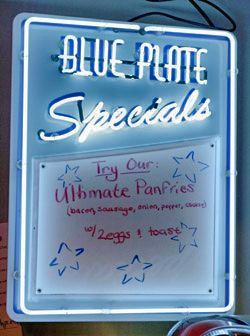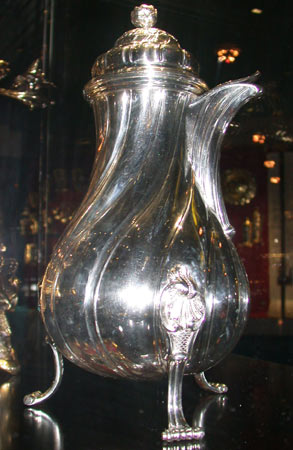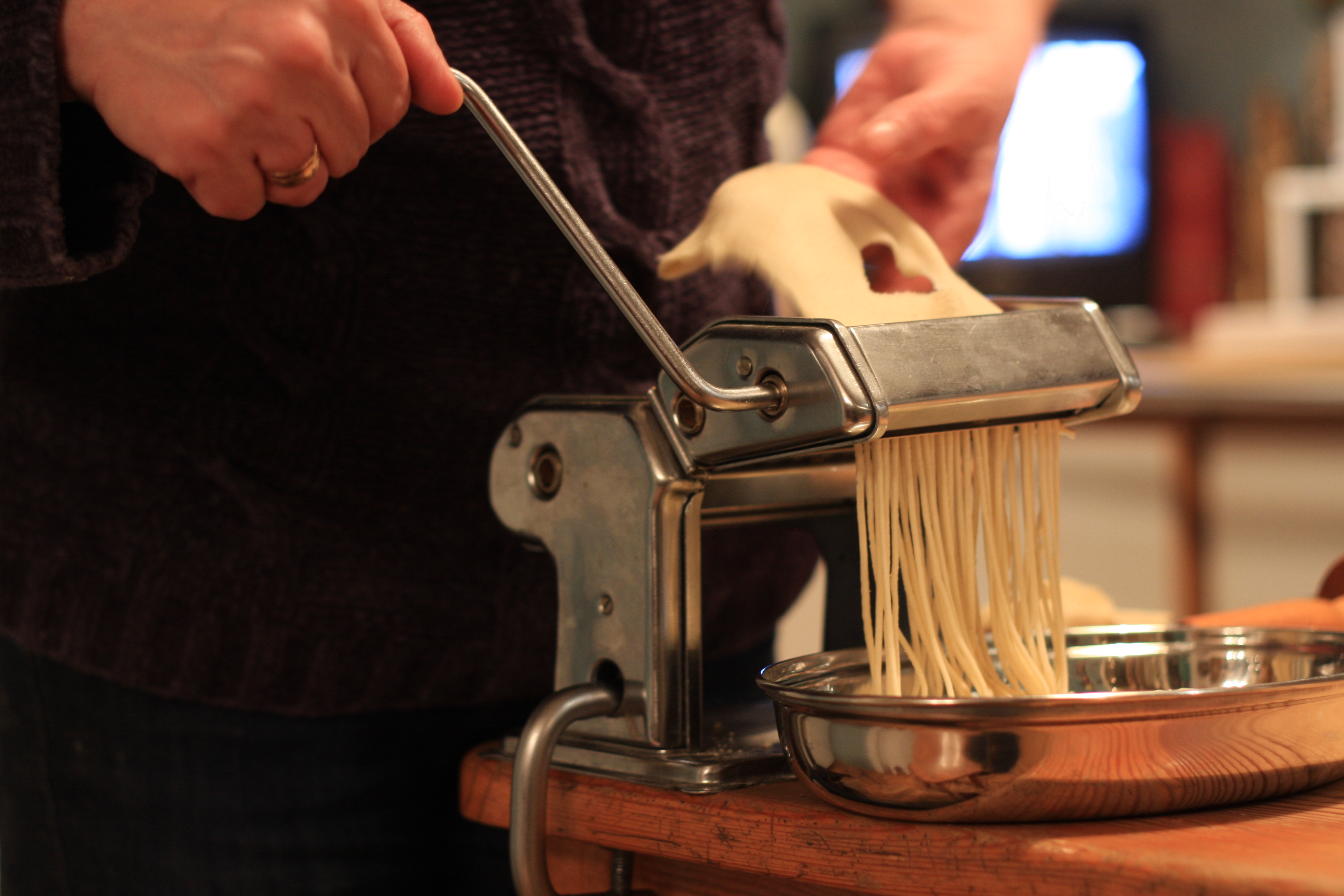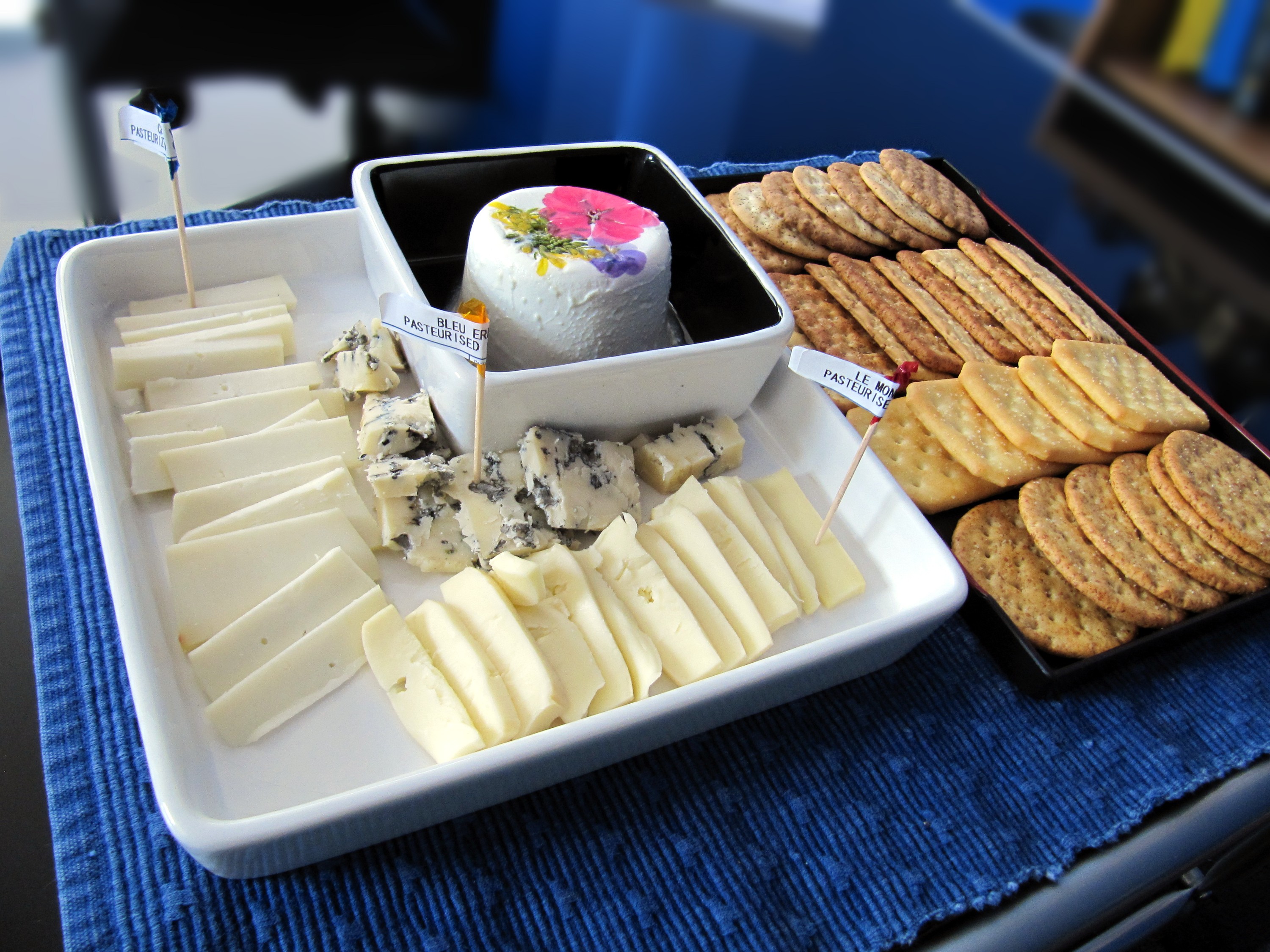|
Diner Lingo
Diner lingo is a kind of American verbal slang used by cooks and chefs in diners and diner-style restaurants, and by the wait staff to communicate their orders to the cooks. Usage of terms with similar meaning, propagated by oral culture within each establishment, may vary by region or even among restaurants in the same locale. History The origin of the lingo is unknown, but there is evidence suggesting it may have been used by waiters as early as the 1870s and 1880s. Many of the terms used are lighthearted and tongue-in-cheek and some are a bit racy or ribald, but are helpful mnemonic devices for short-order cooks and staff. Diner lingo was most popular in diners and luncheonettes from the 1920s to the 1970s. List of terms * 86 – omit from an order; "hold" * Adam and Eve on a raft – two poached eggs atop toast * Adam's ale – water * Angels on horseback – oysters wrapped in bacon * Axle grease – butter or margarine * B&B - bread and butterLeykam, Garrison; ''Cl ... [...More Info...] [...Related Items...] OR: [Wikipedia] [Google] [Baidu] |
Blue Plate Special
A blue-plate special is a discount-priced meal that usually changes daily: a term used in the United States and Canada by restaurants, especially diners and cafes. The term was very common from the 1920s through the 1950s. , there are still a few restaurants and diners that offer blue-plate specials under that name, sometimes on blue plates, but it is a vanishing tradition. However, the phrase is still a common American colloquialism. A Web collection of 1930s prose gives this definition: "A Blue Plate Special is a low-priced daily diner special — a main course with all the fixins, a daily combo, a square for two bits." History The origin and explanation of the phrase are unclear. Michael Quinion cites a dictionary entry indicating that the blue plates were, more specifically, inexpensive divided plates that were decorated with a "blue willow" or similar blue pattern, such as those popularized by Spode and Wedgwood. One of his correspondents says that the first known use ... [...More Info...] [...Related Items...] OR: [Wikipedia] [Google] [Baidu] |
Chocolate Sauce
Chocolate syrup is a sweet, chocolate-flavored condiment. It is often used as a topping or dessert sauce for various desserts, such as ice cream, or mixed with milk to make chocolate milk or blended with milk and ice cream to make a chocolate milkshake. Chocolate syrup is sold in a variety of consistencies, ranging from a thin liquid that can be drizzled from a bottle to a thick sauce that needs to be spooned onto the dessert item. Chocolate syrup is also used to top puddings and cakes. Some restaurants use an artistic drizzling of chocolate syrup to decorate servings of cheesecake or cake, along with other decorations such as cocoa powder, powdered sugar or chocolate shavings. Some brands of chocolate syrup are marketed as chocolate milk syrup (e.g., Nesquik). Other brands are marketed as ice cream sundae toppings. Ingredients A simple chocolate syrup can be made from unsweetened cocoa powder, a sweetener such as sugar, and water. Recipes may also include other ingredients, suc ... [...More Info...] [...Related Items...] OR: [Wikipedia] [Google] [Baidu] |
Hot Chocolate
Hot chocolate, also known as hot cocoa or drinking chocolate, is a heated drink consisting of shaved chocolate, melted chocolate or cocoa powder, heated milk or water, and usually a sweetener like whipped cream or marshmallows. Hot chocolate made with melted chocolate is sometimes called drinking chocolate, characterized by less sweetness and a thicker consistency. The first chocolate drink is believed to have been created by the Maya around 2,500–3,000 years ago, and a cocoa drink was an essential part of Aztec culture by 1400 AD, by which they referred to as . The drink became popular in Europe after being introduced from Mexico in the New World and has undergone multiple changes since then. Until the 19th century, hot chocolate was used medicinally to treat ailments such as liver and stomach diseases. Hot chocolate is consumed throughout the world and comes in multiple variations, including the spiced of Latin America, the very thick served in Italy and served i ... [...More Info...] [...Related Items...] OR: [Wikipedia] [Google] [Baidu] |
Garlic
Garlic (''Allium sativum'') is a species of bulbous flowering plant in the genus ''Allium''. Its close relatives include the onion, shallot, leek, chive, Allium fistulosum, Welsh onion and Allium chinense, Chinese onion. It is native to South Asia, Central Asia and northeastern Iran and has long been used as a seasoning worldwide, with a history of several thousand years of human consumption and use. It was known to ancient Egyptians and has been used as both a food flavoring and a traditional medicine. China produces 76% of the world's supply of garlic. Etymology The word ''garlic'' derives from Old English, ''garlēac'', meaning ''gar'' (spear) and leek, as a 'spear-shaped leek'. Description ''Allium sativum'' is a perennial flowering plant growing from a bulb. It has a tall, erect flowering stem that grows up to . The leaf blade is flat, linear, solid, and approximately wide, with an acute apex. The plant may produce pink to purple flowers from July to September in the Nort ... [...More Info...] [...Related Items...] OR: [Wikipedia] [Google] [Baidu] |
Ketchup
Ketchup or catsup is a table condiment with a sweet and tangy flavor. The unmodified term ("ketchup") now typically refers to tomato ketchup, although early recipes used egg whites, mushrooms, oysters, grapes, mussels, or walnuts, among other ingredients. Tomato ketchup is made from tomatoes, sugar, and vinegar, with seasonings and spices. The spices and flavors vary, but commonly include onions, allspice, coriander, cloves, cumin, garlic, and mustard, and sometimes include celery, cinnamon, or ginger. The market leader in the United States (60% market share) and the United Kingdom (82%) is Heinz Tomato Ketchup. Tomato ketchup is most often used as a condiment to dishes that are usually served hot and are fried or greasy: french fries and other potato dishes, hamburgers, hot dogs, chicken tenders, hot sandwiches, meat pies, cooked eggs, and grilled or fried meat. Ketchup is sometimes used as the basis for, or as one ingredient in, other sauces and dressings, and the flavo ... [...More Info...] [...Related Items...] OR: [Wikipedia] [Google] [Baidu] |
Greasy Spoon
A greasy spoon is a small, cheap restaurant – either an American diner or coffee shop, or a British or Irish cafe – typically specializing in fried foods or home-cooked meals. The term ''greasy spoon'' has been used in the United States since at least the 1920s and is used throughout the United Kingdom. According to the ''Oxford English Dictionary'', the term ''greasy spoon'' originated in the United States and is now used in various English-speaking countries. The earliest appearance of the term in print (MacMillan's Magazine, 1906), refers to events of an earlier time: a restaurant in Paris was visited daily by Robert Louis Stevenson in 1874. "...the Cremerie in the Rue Delambre, - an eating-house much frequented by artists, and familiarly known as The Greasy Spoon..." Nicknaming cheap fried food restaurants after an unwashed spoon dates back at least to 1848: "The Gabbione n Rome.. has withal an appearance so murky and so very far removed from cleanliness, that the Germ ... [...More Info...] [...Related Items...] OR: [Wikipedia] [Google] [Baidu] |
Spaghetti
Spaghetti () is a long, thin, solid, cylindrical pasta.spaghetti Dictionary.com. Dictionary.com Unabridged (v 1.1). Random House, Inc. (accessed: 3 June 2008). It is a of traditional . Like other pasta, spaghetti is made of milled and and sometimes ... [...More Info...] [...Related Items...] OR: [Wikipedia] [Google] [Baidu] |
Apple Pie
An apple pie is a fruit pie in which the principal filling ingredient is apples. The earliest printed recipe is from England. Apple pie is often served with whipped cream, ice cream ("apple pie à la mode"), or cheddar cheese. It is generally double-crusted, with pastry both above and below the filling; the upper crust may be solid or latticed (woven of crosswise strips). The bottom crust may be baked separately ("Blind-baking, blind") to prevent it from getting soggy. Deep-dish apple pie often has a top crust only. Tarte Tatin is baked with the crust on top, but served with it on the bottom. Apple pie is an unofficial National symbols of the United States, symbol of the United States and one of its signature comfort foods. Ingredients Apple pie can be made with many different sorts of apples. The more popular cooking apples include Braeburn, Gala (apple), Gala, Cortland (apple), Cortland, Bramley (apple), Bramley, Empire (apple), Empire, Northern Spy, Granny Smith, and McIn ... [...More Info...] [...Related Items...] OR: [Wikipedia] [Google] [Baidu] |
Cheese And Crackers
Cheese and crackers, also known as cheese and biscuits in the UK, is a dish consisting of crackers paired with cheese. Historically the fare of sailors, soldiers, and pioneers, it had become a regular menu item in American restaurants and bars by the 1850s. Many types of cheeses are used, and it is often paired with wine. It may also be served with fruit products or preserves, or preserved meats, such as pepperoni or salami. Mass-produced cheese and crackers include Handi-Snacks, Ritz, Jatz and Lunchables. Overview Cheese and crackers is a common snack food or '' hors d'oeuvre'' consisting of crackers paired with various cheeses. In the United States it has also been served as a dessert, with the addition of ingredients such as jam, jelly, marmalade or preserves. It is also commonly served at parties in the U.S., and in the Southern United States, it is relatively common for hot chili pepper jelly to be served atop cream cheese and crackers at cocktail parties. Cheese an ... [...More Info...] [...Related Items...] OR: [Wikipedia] [Google] [Baidu] |
Tapioca Pudding
Tapioca pudding (similar to sago pudding) is a sweet pudding made with tapioca and either milk or cream. Coconut milk is also used in cases in which the flavor is preferred or in areas in which it is a commonplace ingredient for cooking. It is made in many cultures with equally varying styles, and may be produced in a variety of ways.It's one of the popular desserts or "Tong Shui" of Chinese culture. It is believed to have derived from the Mayan culture and was brought to China in the late 17th century. Its consistency ranges from thin (runny), to thick, to firm enough to eat with a fork. The pudding can be made from scratch using tapioca in a variety of forms: flakes, coarse meal, sticks, and pearls. Many commercial packaged mixes are also available. British schoolchildren have traditionally nicknamed the dish frog spawn, due to its appearance. ''The Guardian'' described it as "Britain's most hated school pudding", with names such as fish eyes, frogspawn and eyeball puddin ... [...More Info...] [...Related Items...] OR: [Wikipedia] [Google] [Baidu] |
Doneness
Doneness is a gauge of how thoroughly cooked a cut of meat is based on its color, juiciness, and internal temperature. The gradations are most often used in reference to beef (especially steaks and roasts) but are also applicable to other types of meat. Gradations, their descriptions, and their associated temperatures vary regionally, with different cuisines using different cooking procedures and terminology. For steaks, common gradations include ''rare'', ''medium rare'', ''medium'', ''medium well'', and ''well done''. Temperature The table below is from an American reference book and pertains to beef and lamb. The interior of a cut of meat will still increase in temperature by after it is removed from an oven or other heat source as the hot exterior continues to warm the comparatively cooler interior. The exception is if the meat has been prepared in a sous-vide process, as it will already be at temperature equilibrium. The temperatures indicated above are the peak temp ... [...More Info...] [...Related Items...] OR: [Wikipedia] [Google] [Baidu] |




_-_(cropped).jpg)




